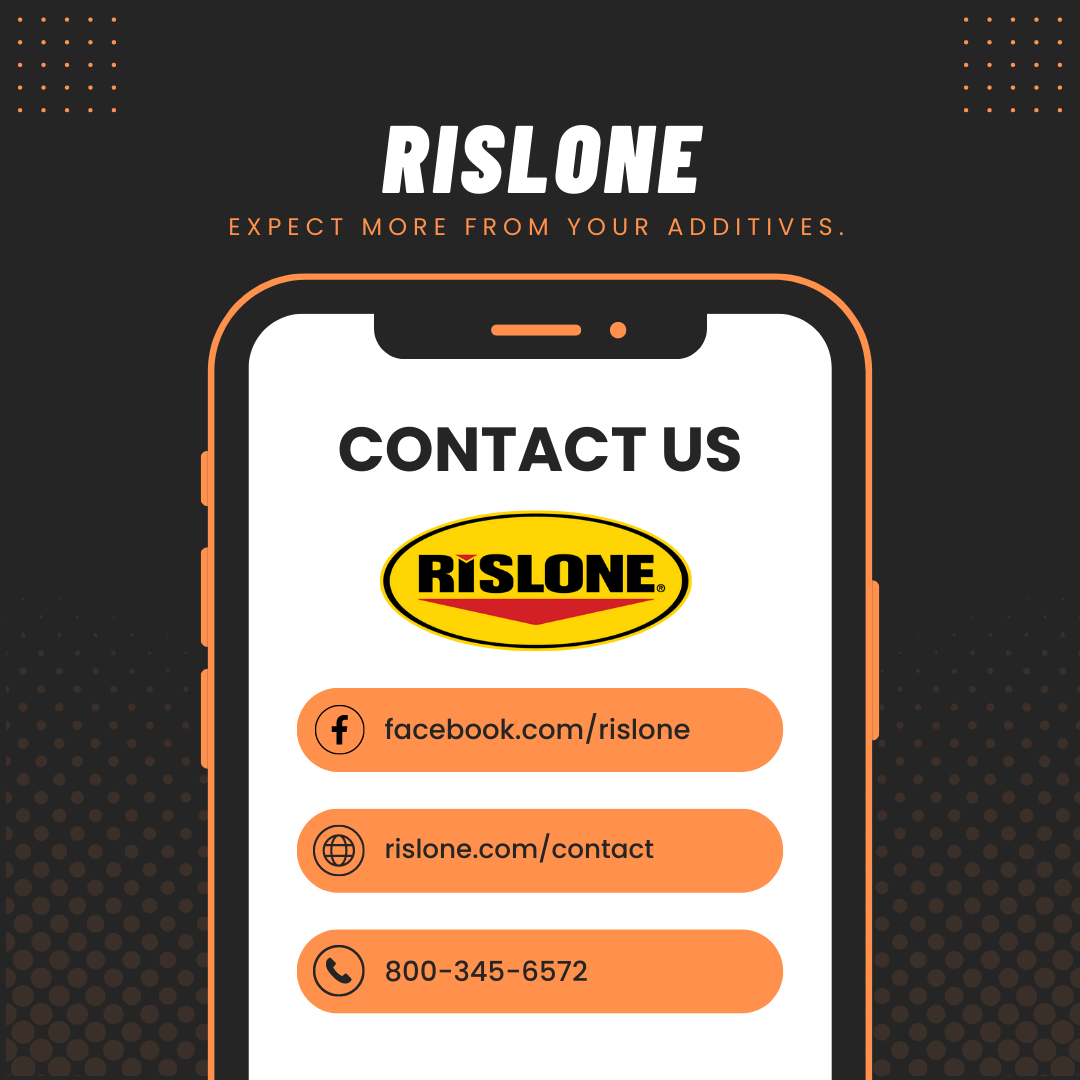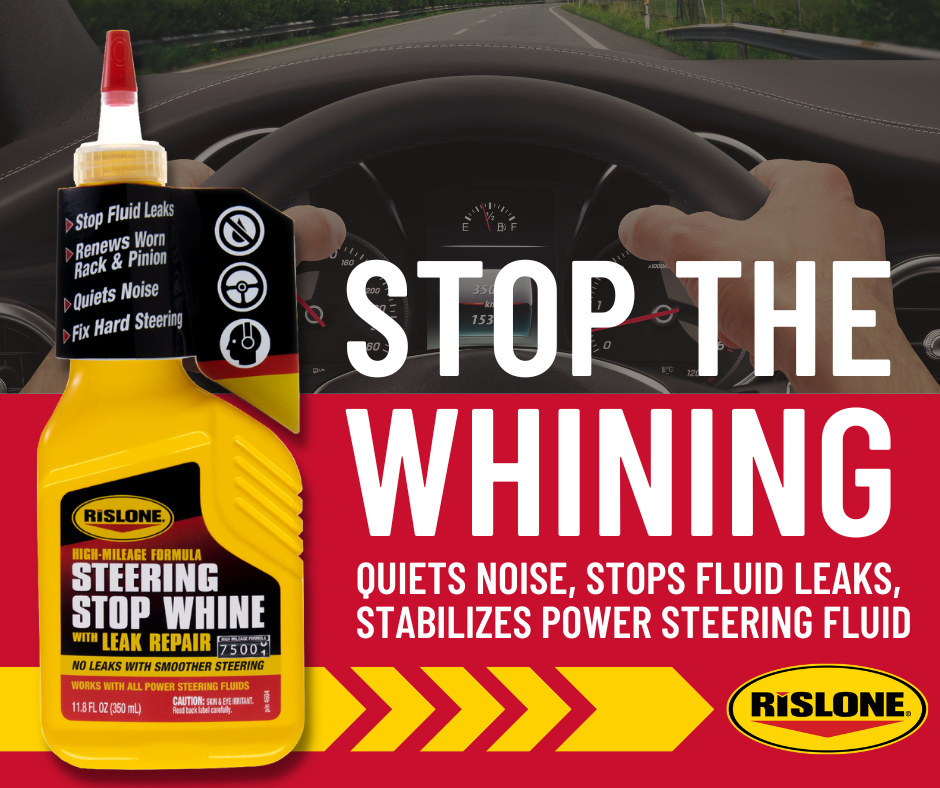The Top Causes of Power Steering System Problems

Does a modern car still get power steering problems?
A steering system doesn’t always work properly, even in today’s modern cars.
You’ve might have experience with this. When you’re paying attention, you begin to hear the dreaded “whine,” or your steering begins feeling sluggish. You may notice leaks, or low fluid levels.
Power steering problems lead to wear and tend to deteriorate quickly. But, a mechanic isn’t always the first line of defense for your car.
Quick Help: My steering is whining, sluggish or leaking. Recommend me a product to fix it without the hassle and expense of a mechanical repair.
Our newest, most advanced product, Rislone Steering Stop Whine with Leak Repair, tackles the most common steering issues with a single bottle.
From its introduction, it has become a national bestseller. It’s available at AutoZone, Advance Auto Parts, Walmart.com and Amazon.
This formula:
-
Quiets noise
-
Seals leaks
-
Fixes hard & intermittent steering
-
Stabilizes existing power steering fluid
-
Conditions seals
Steering problems are common with middle-aged and older cars, and we hear from customers every day about how these problems hurt the driving experience and get worse over time.
With just one bottle of Rislone Steering Stop Whine, you can put these problems to rest without an expensive trip to the mechanic or having your car on the sideline for a couple days.
What are the most common symptoms of power steering problems?
Fortunately, these sort of problems make themselves known with easy-to-identify symptoms, such as:
Difficulty or Stiffness: One of the most common symptoms of a steering issue is a noticeable difference in the ease of steering. If the steering wheel feels stiff and is harder to turn than usual, there could be a problem with your car’s power steering. This stiffness is often more noticeable at slower speeds or when first starting the vehicle.
Noise: Noise, such as a whining or groaning sound when turning the steering wheel, can be another indication of a steering problem. This can be due to low fluid levels, a bad power steering pump, or other issues within the system.
Vibrations or Shuddering: If the steering wheel vibrates or shudders while you’re turning it, especially at slow speeds, this could also be a sign of a power steering issue and/or failing components like a bad power steering pump.
Other less common but still significant symptoms may include:
Fluid Leaks: A red, pink, amber (or even clear) puddle under your car can indicate a power steering fluid leak.
Erratic Power Assist: If the power assist seems to kick in and out randomly, or you notice a change in the force needed to steer, this can suggest a problem with the power steering control system.
If you notice any combination of these symptoms, it’s important to act quickly. You don’t want to ignore the problem until it leads to total steering loss.
What would cause my power steering to stop working?
Multiple components can lead to power steering problems. Here are some of the most common:
-
Fluid Leakage: Power steering relies on steering fluid (remember a steering is essentially a hydraulic system) to help transmit force to the wheels. If your system has a leak, your steering fluid level can drop and lead to issues with steering. Common leak points include the power steering pump, hoses, and rack-and-pinion or steering gear box. Power steering fluid leaks are a killer.
-
Worn Out Power Steering Pump: The power steering pump pressurizes the steering fluid and sends it to the steering gear. If the pump is failing due to heavy wear, it may not provide enough pressure for the system to function properly.
-
Air in the System: Sometimes, air can get into the power steering system, causing the steering to feel notchy or unresponsive. Remember that your steering system relies on constant high pressure (like hydraulic systems), and air is not a welcome guest.
-
Worn or Damaged Belt: The power steering pump is usually driven by the engine via a serpentine or “V” power steering belt. If this belt becomes worn out, loose, or breaks, the pump won’t operate properly, leading to steering difficulties.
-
Faulty Steering Rack or Gear Box: The rack-and-pinion or steering gear box takes pressurized steering fluid from the pump and uses it to help turn the wheels. If this component becomes worn or damaged, it can lead to problems or even power steering failure.
-
Electrical Problems: In electric power steering systems (which are becoming more common in newer vehicles), issues can arise from a failure in the electric motor, sensors, or electronic control unit (ECU).
Remember, if you’re having power steering failure or problems, they could be anywhere within the steering column and related subsystems. Refer to your owner’s manual for more information.
What happens if my power steering fluid is not full?
Power steering fluid plays a critical role in maintaining the safety and proper functioning of a car’s steering. Power steering fluid is a type of hydraulic fluid that enables the transmission of power as you steer, which means you can steer easily.
If you don’t have enough fluid, it can cause a variety of issues:
-
Hard Steering: The most noticeable effect will be the power steering becoming significantly harder, especially at lower speeds. It may take more effort to steer, making the vehicle more difficult to maneuver.
-
Noises: You may hear whining, groaning, or squealing noises when you turn the wheel.
-
Uneven Feel: Steering might become erratic, with periods of heaviness and lightness as you steer. This can make the vehicle feel unstable and unpredictable.
-
Damage to the Pump: If left unchecked, low power steering fluid can lead to damage to the pump. As the pump tries to move air instead of fluid, it can overheat and eventually fail. This can be a costly repair.
If you notice a drop in your fluid level, it’s important to address it promptly. This often indicates a leak somewhere in the system. You don’t want a problem to lead to full power steering loss, which is obviously a safety concern.
How much does it cost to repair problems like this?
The cost of repair can vary greatly depending on the specific problem and the make and model of your vehicle. Here are some average cost estimates:
-
Pump Replacement: The pump is one of the most commonly replaced parts in the system itself. This can cost anywhere from $200 to $600 for parts and labor.
-
Replacement of Hoses: If a leak is traced to one of the leaks in the power steering hoses, replacement cost can range from $100 to $300 for parts and labor.
-
Flush: A simple flush, which can often solve minor issues or as preventive maintenance, can cost around $70 to $150.
-
Rack Replacement: The rack (or gear box in some older vehicles) is a major component and its replacement can be quite costly. This can range anywhere from $400 to over $1,000, depending on the vehicle model.
-
Electronic Repair: For vehicles with an electronic system, costs can also vary widely depending on the issue. Replacing an electric motor, for instance, can cost anywhere from $200 to $700. More complex issues with the electronic control unit (ECU) could be even more expensive.
Keep in mind these are rough estimates and actual costs can vary based on labor rates in your area, the specific make and model of your vehicle, and the extent of the damage to the car’s power steering system.
Questions about your particular issue?
If you are dealing with an issue and don’t know where to start, give us a call at 800-345-6572 (M-F, 8am – 5pm EDT), or contact us on the web. Our Michigan-based customer support will be more than happy to help.



